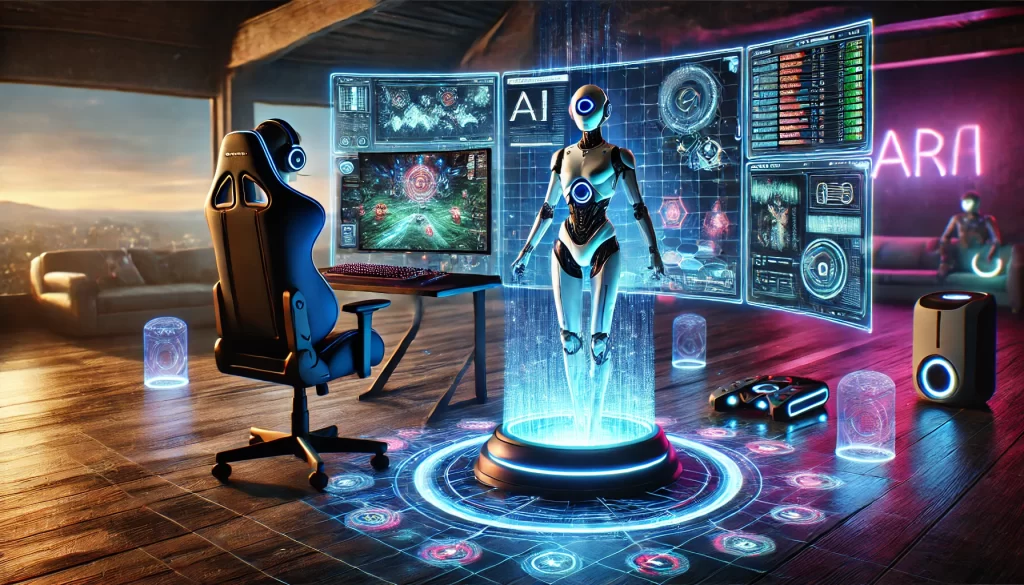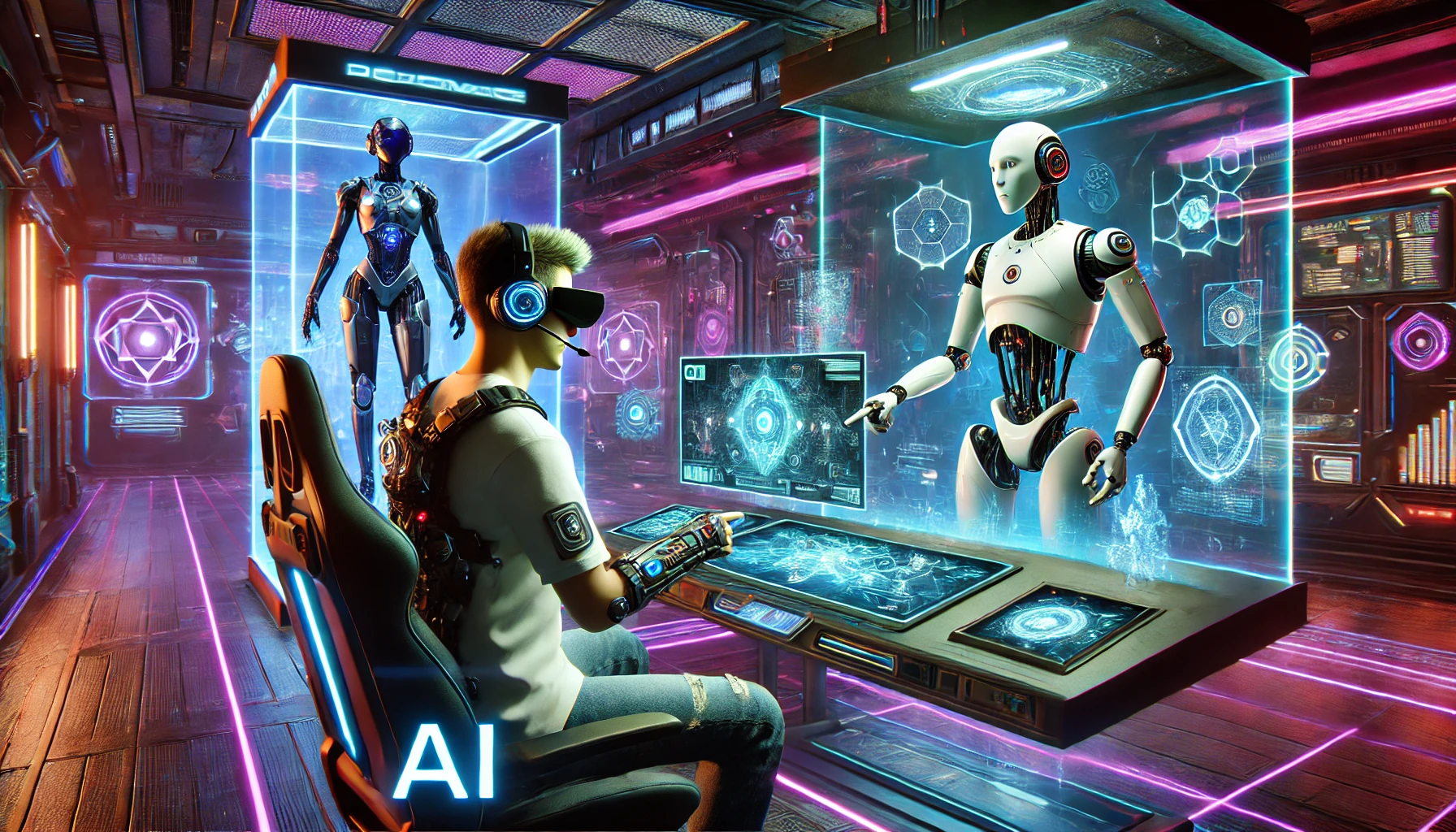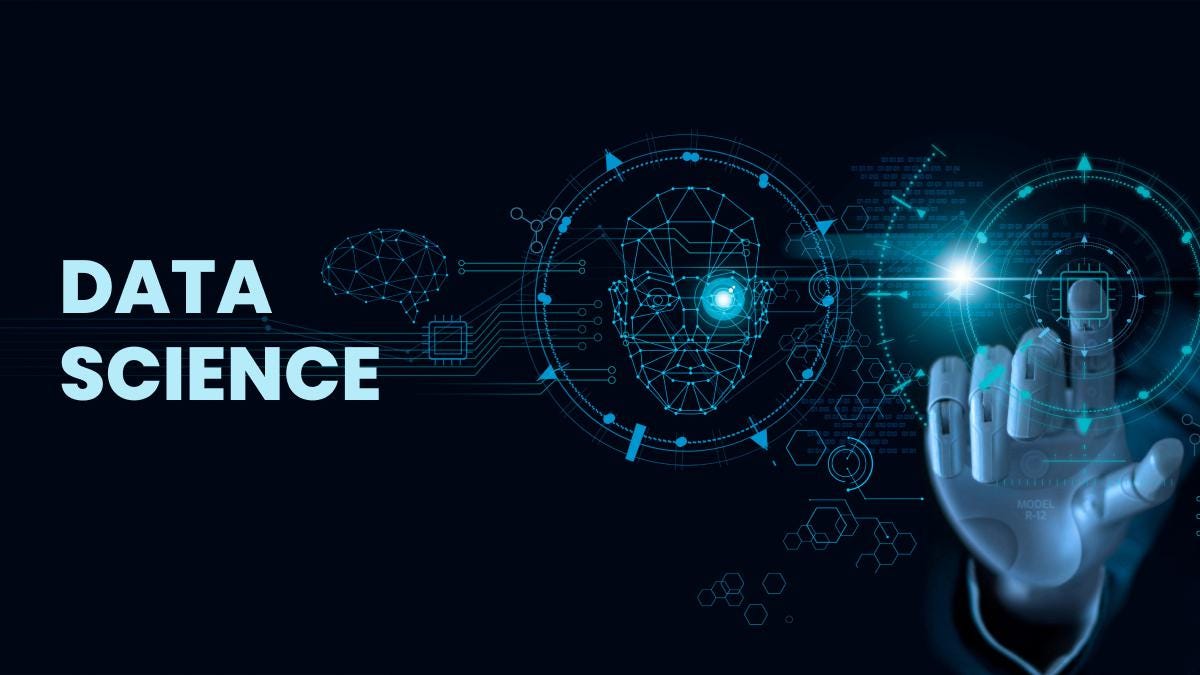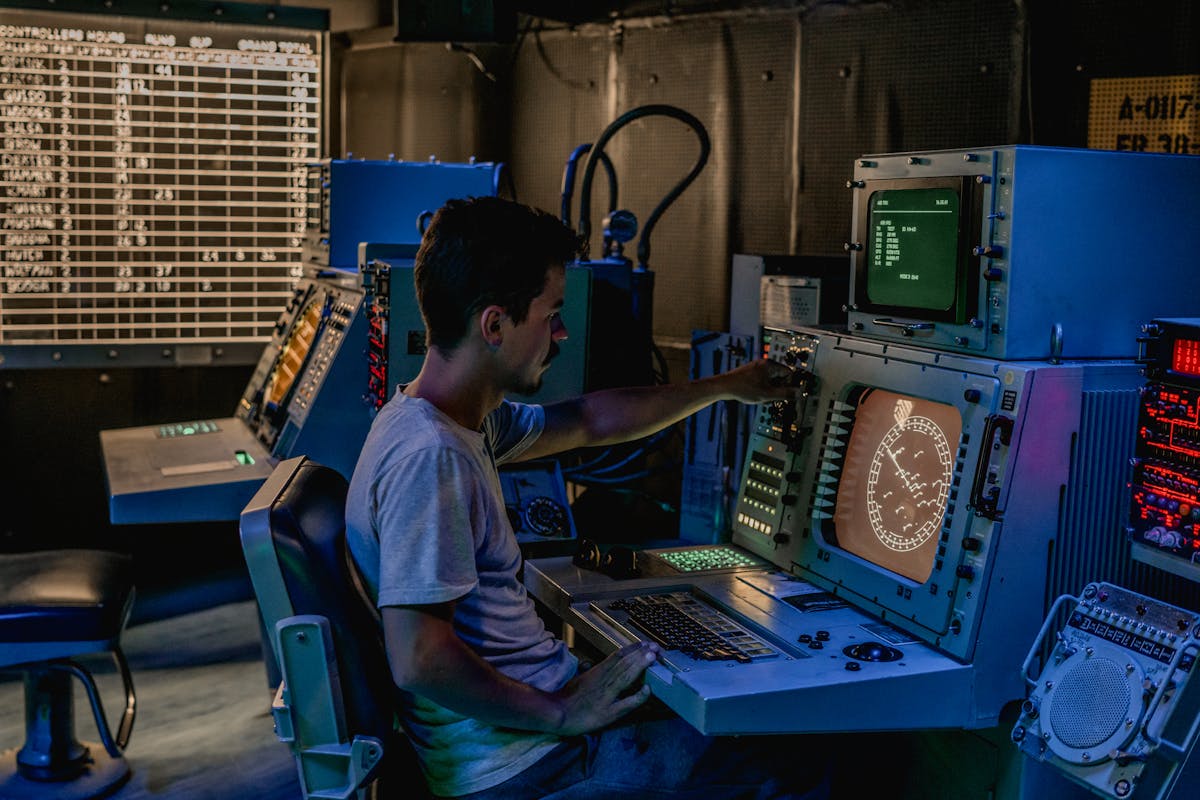Artificial Intelligence revolutionizing modern day Gaming
Introduction
Artificial Intelligence (AI) has emerged as a transformative force across multiple industries, and the gaming sector is no exception. AI, at its core, refers to the simulation of human intelligence in machines, enabling them to make decisions, learn from experiences, and execute tasks that would typically require human cognition. In the realm of gaming, AI has evolved from simple rule-based algorithms to sophisticated machine learning models that enhance gameplay, create immersive environments, and improve user experiences. This article explores the various ways AI will shape the future of gaming and its modern-day applications.
Types of AI Implementation in Gaming
Procedural Content Generation (PCG)
Procedural Content Generation leverages AI to create game environments, characters, levels, and narratives dynamically. AI-driven PCG algorithms ensure that every playthrough offers a unique experience by generating new and unpredictable game elements.
Example:
- No Man’s Sky employs procedural generation to create billions of unique planets, ensuring that players encounter different terrains, creatures, and landscapes.
Non-Player Character (NPC) Behavior Enhancement
AI-driven NPCs have transitioned from scripted responses to adaptive behaviors that react intelligently to player actions. Machine learning algorithms allow NPCs to learn from user input, making them more unpredictable and engaging.
Example:
- The Last of Us Part II integrates AI-driven NPCs that can communicate, coordinate attacks, and exhibit human-like reactions to in-game events.
Real-Time Strategy and Decision Making
AI plays a crucial role in real-time strategy (RTS) games by dynamically adjusting enemy behaviors based on player strategies. AI-driven decision-making systems enable opponents to analyze player movements and counter them effectively.
Example:
- Age of Empires IV incorporates AI that learns from past battles to optimize strategies, making the game more challenging and engaging.
AI-Powered Animation and Graphics Enhancement
Deep learning and AI algorithms enhance in-game graphics and animations, ensuring smoother movements and realistic character interactions. AI-powered upscaling techniques improve resolution and texture quality without increasing hardware requirements.
Example:
- NVIDIA DLSS (Deep Learning Super Sampling) uses AI to enhance frame rates and improve visual fidelity in graphically demanding games.
Personalized Gaming Experience
AI-driven personalization tailors the gaming experience based on individual player preferences, skill levels, and play styles. This approach enhances player engagement by dynamically adjusting game difficulty, recommendations, and narratives.
Example:
- Left 4 Dead employs the AI “Director,” which adjusts difficulty based on player performance to maintain an engaging and balanced gameplay experience.

Modern-Day Implications and Applications of AI in Gaming
Adaptive Difficulty Scaling
AI-powered difficulty adjustment ensures that players remain challenged without experiencing frustration. This dynamic system assesses player skills and modifies the difficulty level accordingly.
Example:
- Resident Evil 4 Remake employs AI to dynamically adjust enemy behaviors based on player performance, ensuring a balanced challenge.
AI-Generated Storytelling and Narrative Design
Advanced AI models can craft compelling narratives that adapt to player choices, offering dynamic storytelling experiences. AI-driven dialogue systems enhance immersion by creating realistic character interactions.
Example:
- Cyberpunk 2077 uses AI to generate immersive NPC dialogue and interactions that evolve based on player decisions.
Automated Game Testing and Bug Detection
AI facilitates automated game testing by detecting bugs, performance issues, and design flaws more efficiently than human testers. AI-driven quality assurance enhances game stability and reduces development time.
Example:
- Ubisoft utilizes AI-powered testing tools to identify potential game-breaking bugs before release.
Voice Recognition and AI Chatbots
AI-driven voice recognition systems allow players to interact with in-game characters using natural language. AI chatbots enhance multiplayer interactions by providing seamless communication.
Example:
- Mass Effect integrates AI-powered dialogue systems that react to player voice commands, enriching role-playing experiences.
AI-Driven Game Development and Asset Creation
Game developers leverage AI to streamline asset creation, including character models, environments, and animations. AI-assisted design tools accelerate production while maintaining high-quality graphics.
Example:
- AI tools like Promethean AI assist game designers in generating realistic environments efficiently.
Conclusion
Artificial Intelligence is revolutionizing the gaming industry by enhancing gameplay, improving NPC intelligence, automating content generation, and providing immersive experiences. From procedural content generation to AI-driven storytelling, the applications of AI in gaming continue to expand, shaping the future of interactive entertainment. As AI technology evolves, its integration into gaming will lead to even more realistic, dynamic, and engaging virtual worlds, setting new benchmarks for innovation in the industry.








